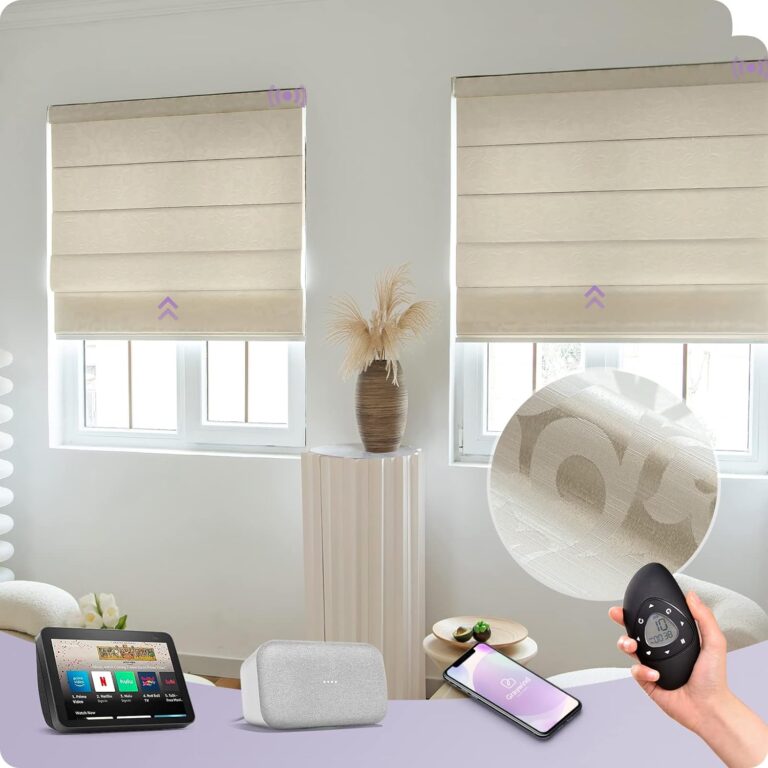Motorization
Toronto Motorized Blinds & Shades
Many window coverings including roller shades and drapes can be motorized. Through the use of a remote, you can raise and lower your window coverings, or move your drapes from side to side. You can power your motorized window coverings either through a battery pack, low voltage wall plug, 110V wall plug, or through a hardwired connection done with the help of an electrician. In addition, many motorized blinds can be connected to a home automation system, allowing you more efficient control over your blinds.

Battery Operated Motorized Blinds
Battery Operated Motors are the easiest way to motorize your blinds. A battery pack is attached behind the blind to power the blind or a rechargeable battery is integrated with the motor. Once the batteries run out, either change the batteries in the battery pack, or recharge the battery in the motor. Battery Operated Motorized Blinds are typically controlled by a remote control, however some brands of battery operated blinds can be connected to a home automation system. Draperies cannot be motorized with a battery powered option.
Wall Plug Low Voltage and 110V Motorized Blinds and Drapes
Low Voltage and 110V Motors are a great alternative to battery operated motors. These motors connect right into an outlet either through a low voltage transformer or a 110V plug for larger drapes. Since these motorized blinds don't use batteries, you never have to worry about changing batteries. Just like Battery Operated Motorized Blinds, Low Voltage and 110V Blinds can also be connected to a home automation system.
Hardwired Motorized Low Voltage and 110V Blinds and Drapes
Hardwired Motorized Blinds are motorized blinds connected directly to the wiring of the house with the help of an electrician. The great thing about these blinds is that the wiring is all hidden behind the walls, giving the same benefits as Low Voltage and 110V Motorization while also not having to worry if there is a wall plug close enough to plug the blinds in. This option is the most popular option when connecting your blinds to a home automation system as a data cable can be connected to the blinds through the same wiring that powers the blinds.
- Battery Operated Honeycomb Shades
- List Item #3
- List Item #3
- List Item #3
- List Item #3
- List Item #3
- List Item #3

